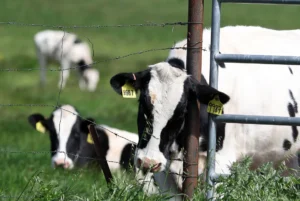The United States’ delayed response to H5N1 bird flu, with reported cases in humans and cattle across several states, highlights critical gaps in coordination and readiness. Unlike Finland, which swiftly contained the virus in animals before human transmission, the U.S. faces challenges in timely detection and coordinated action. Efforts such as increased test production, vaccine evaluation, and wastewater monitoring show progress, but rapid response and integrated efforts between human and animal health sectors are crucial for effective containment and prevention. Strengthening these measures is essential to mitigate risks to public health and restore confidence in pandemic preparedness.
In the United States, H5N1 has been spreading among cattle since late last year, yet comprehensive testing and tracking have been insufficient to gauge its full extent among animals and humans. Advocates argue for adopting the 7-1-7 target for outbreak management: detecting suspected outbreaks within seven days, notifying authorities within one day, and completing the initial response within seven days to prevent further spread. Finland successfully adhered to this standard, unlike the U.S., where it took approximately 100 days to detect H5N1 in cattle, with uncertainties persisting over meeting the timely response target.
Trust is crucial in pandemic response. Finland’s established trust in its food authority facilitated swift action, including reimbursing farmers promptly for culling affected animals and launching a vaccination program for frontline workers against H5N1. Conversely, trust in the U.S. government remains low, particularly among rural communities affected by outbreaks. Efforts such as financial assistance to farms and support for veterinary expenses aim to bolster containment measures and rebuild confidence in public health initiatives. However, continued improvement in communication, coordination between human and animal health sectors, and proactive measures are essential to safeguard the agricultural sector and public health in the U.S.


“Effective Government Collaboration in Finland: Swift Action and New Laws Enhance Response”
Officials in Finland’s human health and agriculture sectors collaborated closely, leading to a rapid and efficient response. This joint effort bolstered detection capabilities, fostered collaboration among industry stakeholders, and prioritized worker protection from infection. Finland promptly enacted new legislation to empower effective control measures.
In the United States, governmental agencies face challenges due to differing priorities, legal mandates, flexibility, and political considerations. Multiple agencies, such as USDA for cattle health, FDA for milk safety, and CDC for human diseases including those from animal exposure, are involved. While coordination is improving, effective directives should be tailored to each community’s specific needs rather than relying solely on national mandates, given the country’s vast size and diversity.
There is a pressing need for enhanced collaboration among local, state, and federal authorities, including agencies like CDC, USDA, and FDA, as well as their state counterparts. Transparency and real-time information sharing with the public are essential. Congress must allocate resources to strengthen pandemic prevention and response systems, workforce readiness, and infrastructure. Crucially, building trust with farm owners and workers through responsive communication and support is paramount.
Effective responses to outbreaks like H5N1 require global cooperation, as microbes transcend borders. Our organization’s recent report underscores the importance of proactive health systems in preventing epidemics through meticulous planning, early detection, and decisive action.